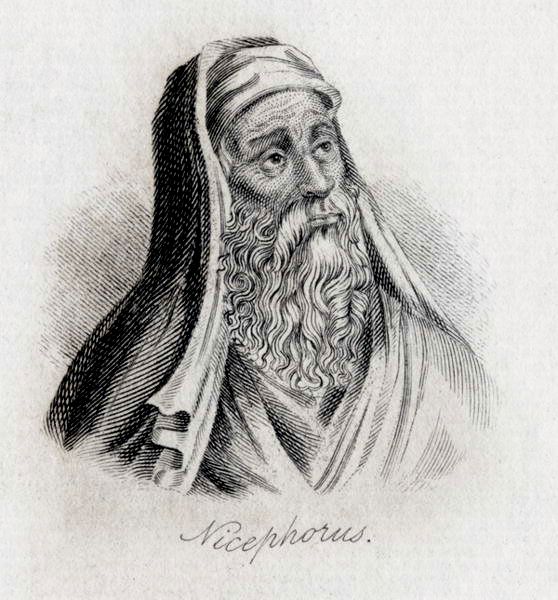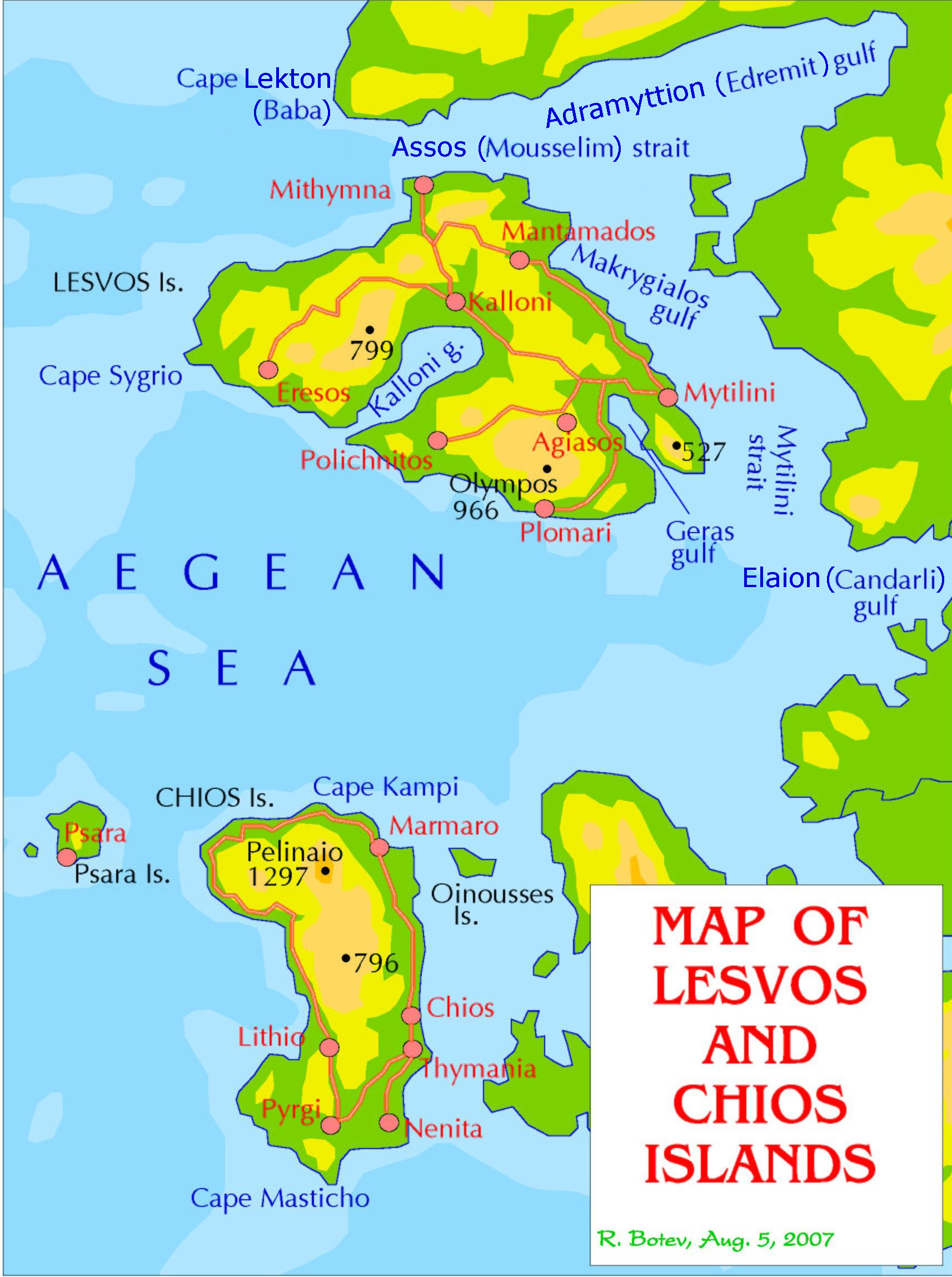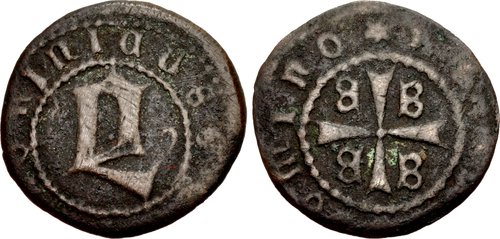|
Doukas (historian)
Doukas or Dukas (after 1462) was a Byzantine Greek historian who flourished under Constantine XI Palaiologos, the last Byzantine Emperor. He is one of the most important sources for the last decades and eventual fall of the Byzantine Empire to the Ottomans. Life The date of Doukas's birth is not recorded, nor is his first name or the names of his parents. He was born probably in the 1390s somewhere in western Asia Minor, where his paternal grandfather, Michael Doukas, had fled. Michael Doukas was eulogized by his grandson as a learned man, especially in matters of medicine. He had played a role in the Byzantine civil wars of the mid-14th century as a partisan of John VI Kantakouzenos. Michael Doukas had been arrested by Alexios Apokaukos, and was one of the prisoners at the palace where Apokaukos was murdered by some of the inmates. Michael Doukas narrowly avoided becoming one of the 200 prisoners murdered in retribution by hiding in the underground chamber of the New Church ... [...More Info...] [...Related Items...] OR: [Wikipedia] [Google] [Baidu] |
Turkey
Turkey ( tr, Türkiye ), officially the Republic of Türkiye ( tr, Türkiye Cumhuriyeti, links=no ), is a list of transcontinental countries, transcontinental country located mainly on the Anatolia, Anatolian Peninsula in Western Asia, with a East Thrace, small portion on the Balkans, Balkan Peninsula in Southeast Europe. It shares borders with the Black Sea to the north; Georgia (country), Georgia to the northeast; Armenia, Azerbaijan, and Iran to the east; Iraq to the southeast; Syria and the Mediterranean Sea to the south; the Aegean Sea to the west; and Greece and Bulgaria to the northwest. Cyprus is located off the south coast. Turkish people, Turks form the vast majority of the nation's population and Kurds are the largest minority. Ankara is Turkey's capital, while Istanbul is its list of largest cities and towns in Turkey, largest city and financial centre. One of the world's earliest permanently Settler, settled regions, present-day Turkey was home to important Neol ... [...More Info...] [...Related Items...] OR: [Wikipedia] [Google] [Baidu] |
Gattilusi
The House of Gattilusio was a powerful Genoese family who controlled a number of possessions in the northern Aegean from 1355 until the mid 15th century. Anthony Luttrell has pointed out that this family had developed close connections to the Byzantine ruling house of the Palaiologos—"four successive generations of Gattilusio married into the Palaiologos family, two to emperors' daughters, one to an emperor, and one to a despot who later became an emperor"—which could explain their repeated involvement in Byzantine affairs. The Gattilusi were Lords of Lesbos (present-day in Greece) from 1355 to 1462 and Lords of Aenus (present-day in Turkey) from 1376 to 1456. History The Gattilusi family was founded by two brothers, Francesco and Niccolò Gattilusi, who were the nephew of Oberto Gattilusi. The name of their father is not known, although based on the heraldic evidence of their inscriptions, Anthony Luttrell argues that their mother was a member of the Doria family. Fran ... [...More Info...] [...Related Items...] OR: [Wikipedia] [Google] [Baidu] |
John V Palaiologos
John V Palaiologos or Palaeologus ( el, Ἰωάννης Παλαιολόγος, ''Iōánnēs Palaiológos''; 18 June 1332 – 16 February 1391) was Byzantine emperor from 1341 to 1391, with interruptions. Biography John V was the son of Emperor Andronikos III and his wife Anna, the daughter of Count Amadeus V of Savoy by his wife Maria of Brabant. His long reign was marked by the gradual dissolution of imperial power amid numerous civil wars and the continuing ascendancy of the Ottoman Turks. Early rule and first civil war John V came to the throne at age eight. His reign began with an immediate civil war between his designated regent, his father's friend John VI Kantakouzenos, and a self-proclaimed council of regency composed of his mother Anna, the patriarch John XIV Kalekas, and the '' megas doux'' Alexios Apokaukos. During this civil war in 1343 Anna pawned the Byzantine crown jewels for 30,000 Venetian ducats. From 1346 to 1349, the Black Death devastated Con ... [...More Info...] [...Related Items...] OR: [Wikipedia] [Google] [Baidu] |
Adam And Eve
Adam and Eve, according to the creation myth of the Abrahamic religions, were the first man and woman. They are central to the belief that humanity is in essence a single family, with everyone descended from a single pair of original ancestors. They also provide the basis for the doctrines of the fall of man and original sin that are important beliefs in Christianity, although not held in Judaism or Islam. In the Book of Genesis of the Hebrew Bible, chapters one through five, there are two creation narratives with two distinct perspectives. In the first, Adam and Eve are not named. Instead, God created humankind in God's image and instructed them to multiply and to be stewards over everything else that God had made. In the second narrative, God fashions Adam from dust and places him in the Garden of Eden. Adam is told that he can eat freely of all the trees in the garden, except for a tree of the knowledge of good and evil. Subsequently, Eve is created from one of Ada ... [...More Info...] [...Related Items...] OR: [Wikipedia] [Google] [Baidu] |
Laonikos Chalkokondyles
Laonikos Chalkokondyles, Latinized as Laonicus Chalcocondyles ( el, Λαόνικος Χαλκοκονδύλης, from λαός "people", νικᾶν "to be victorious", an anagram of Nikolaos which bears the same meaning; c. 1430 – c. 1470; The family name 'Chalcokondyles' is from χαλκος "brass",and κονδυλος "knuckle".) was a Byzantine Greek historian from Athens. He is known for his '' Demonstrations of Histories'' in ten books, which record the last 150 years of the Byzantine Empire. Life The Chalkokondyles were one of the oldest native families in Athens and had gained great prominence. At the time of Laonikos it was ruled by the Florentine Acciaioli family. His father George was a kinsman of Maria Melissene, the wife of Duke Antonio I Acciaioli. When Antonio died in 1435, Maria attempted to secure control of the Duchy of Athens and sent George on a mission to the Ottoman Sultan Murad II, asking that the government of Athens might be entrusted to he ... [...More Info...] [...Related Items...] OR: [Wikipedia] [Google] [Baidu] |
George Sphrantzes
George Sphrantzes, also Phrantzes or Phrantza ( el, Γεώργιος Σφραντζής or Φραντζής; 1401 – c. 1478), was a late Roman (Byzantine) historian and Imperial courtier. He was an attendant to Emperor Manuel II Palaiologos, '' protovestiarites'' ("Lord of the Imperial Wardrobe") under John VIII Palaiologos, and a close confidant to Constantine XI Palaiologos. He was an eyewitness of the Fall of Constantinople in 1453, made a slave by the victorious Ottomans, but ransomed shortly afterwards. Sphrantzes served the surviving members of the Palaiologian family for the next several years until taking monastic vows in 1472. It was while a monk he wrote his history, which ends with the notice of Sultan Mehmed II's attempt to capture Naupaktos, which he dates to the summer of 1477; Sphrantzes is assumed to have died not long after that event. Life He was born in Constantinople, during the Ottoman blockade of that city; his godmother was the nun Thomais. In 1418 h ... [...More Info...] [...Related Items...] OR: [Wikipedia] [Google] [Baidu] |
Nikephoros Gregoras
Nicephorus Gregoras (; Greek: , ''Nikephoros Gregoras''; c. 1295 – 1360) was a Greek astronomer, historian, and theologian. Life Gregoras was born at Heraclea Pontica, where he was raised and educated by his uncle, John, who was the Bishop of Heraclea. At an early age he settled at Constantinople, where his uncle introduced him to Andronicus II Palaeologus, by whom he was appointed '' chartophylax'' (keeper of the archives). In 1326 Gregoras proposed (in a treatise which remains in existence) certain reforms in the calendar, which the emperor refused to carry out for fear of disturbances; nearly two hundred years later they were introduced by Gregory XIII on almost the same lines. Downfall of Andronicus II When Andronicus was dethroned (1328) by his grandson Andronicus III Palaeologus, Gregoras shared his downfall and retired into private life. Attacked by Barlaam of Calabria, he was with difficulty persuaded to come forward and meet him in a war of words, in which Barla ... [...More Info...] [...Related Items...] OR: [Wikipedia] [Google] [Baidu] |
Ottoman Conquest Of Lesbos
The Ottoman conquest of Lesbos took place in September 1462. The Ottoman Empire, under Sultan Mehmed II, laid siege to the island's capital, Mytilene. After its surrender, the other forts of the island surrendered as well. The event put an end to the semi-independent Genoese lordship that the Gattilusio family had established in the northeastern Aegean since the mid-14th century, and heralded the beginning of the First Ottoman–Venetian War in the following year. In the mid-14th century, the Gattilusio family had established an autonomous lordship under Byzantine suzerainty on Lesbos. By 1453, the Gattilusio domains had come to include most of the islands in the northeastern Aegean. In the aftermath of the fall of the Byzantine Empire in 1453, however, Mehmed II began reducing the Gattilusio holdings. By the end of 1456, only Lesbos remained in Gattilusio hands, in exchange for an annual tribute to the Sultan. In 1458 Niccolò Gattilusio seized control of the island from his br ... [...More Info...] [...Related Items...] OR: [Wikipedia] [Google] [Baidu] |
Domenico Gattilusio
Domenico Gattilusio (died 1458) was the fifth Gattilusio lord of Lesbos from 1455 to 1458. He was a son of Dorino I Gattilusio and Orietta Doria. Life Domenico served as regent for his father after the latter became bed-ridden in 1449. He succeeded his father on the latter's death, at a time of growing Ottoman hegemony; when the Turkish admiral, on his way to Rhodes, anchored off Lesbos in June 1455, Domenico sent his official, the historian Doukas, to the dignitary with handsome gifts of "garments of silk, 8 woven wool garments, 6,000 minted silver coins, 20 oxen, 50 sheep, more than 800 measures of wine, 2 measures of biscuits, one measure of bread, more than 1000 litres of cheese, and fruit without measure", as well as gifts to the members of the admiral's staff. Not long after this visit Domenico's father died; Domenico made himself lord over his father's territories—at this point comprising the islands of Lesbos, Thasos, Lemnos and the mainland town of Phocaea—while app ... [...More Info...] [...Related Items...] OR: [Wikipedia] [Google] [Baidu] |
Didymoteicho
Didymoteicho ( el, Διδυμότειχο, Didymóteicho ) is a city located on the eastern edge of the Evros regional unit of Eastern Macedonia and Thrace, in northeastern Greece. It is the seat of the municipality of the same name. The town (pop. 9,263 in 2011) sits on a plain and located south east of Svilengrad, south of Edirne, Turkey and Orestiada, west of Uzunköprü, Turkey, about 20 km north of Soufli and about 90 km north of Alexandroupoli. The municipality of Didymóteicho has a land area of 565.4 km² and a population of 19,493 inhabitants. Name "Didymoteicho" is the modern Greek form of , ''Didymóteichon'', from , ''dídymos'', "twin" and , ''teîchos'', "wall". The name first appears in 591/592, and most resulted from the refortification of the city under Justinian I (see below). The corrupted short form ''Dimotica'' or ''Demotica'' or variants thereof are attested in Western languages since the late 12th century (early forms ''Timoticon'', ''D ... [...More Info...] [...Related Items...] OR: [Wikipedia] [Google] [Baidu] |
Mehmed II
Mehmed II ( ota, محمد ثانى, translit=Meḥmed-i s̱ānī; tr, II. Mehmed, ; 30 March 14323 May 1481), commonly known as Mehmed the Conqueror ( ota, ابو الفتح, Ebū'l-fetḥ, lit=the Father of Conquest, links=no; tr, Fâtih Sultan Mehmed, links=no), was an Ottoman sultan who ruled from August 1444 to September 1446, and then later from February 1451 to May 1481. In Mehmed II's first reign, he defeated the crusade led by John Hunyadi after the Hungarian incursions into his country broke the conditions of the truce Peace of Szeged. When Mehmed II ascended the throne again in 1451, he strengthened the Ottoman navy and made preparations to attack Constantinople. At the age of 21, he conquered Constantinople (modern-day Istanbul) and brought an end to the Byzantine Empire. After the conquest Mehmed claimed the title Caesar of the Roman Empire ( ota, قیصر روم, Qayser-i Rûm, links=no), based on the fact that Constantinople had been the seat and capital of t ... [...More Info...] [...Related Items...] OR: [Wikipedia] [Google] [Baidu] |
Murad II
Murad II ( ota, مراد ثانى, Murād-ı sānī, tr, II. Murad, 16 June 1404 – 3 February 1451) was the sultan of the Ottoman Empire from 1421 to 1444 and again from 1446 to 1451. Murad II's reign was a period of important economic development. Trade increased and Ottoman cities expanded considerably. In 1432, the traveller Bertrandon de la Broquière noted that Ottoman annual revenue had risen to 2,500,000 ducats, and that if Murad II had used all available resources he could easily have invaded Europe. Early life Murad was born in June 1404 (or 1403) to Sultan Mehmed I. The identity of his mother is disputed. According to 15th century historian Şükrullah, Murad's mother was a concubine. Hüseyin Hüsâmeddin Yasar, an early 20th century historian, wrote in his work ''Amasya Tarihi'', that his mother was Şehzade Hatun, daughter of Divitdar Ahmed Pasha. According to historians İsmail Hami Danişmend, and Heath W. Lowry, his mother was Emine Hatun, daughter of ... [...More Info...] [...Related Items...] OR: [Wikipedia] [Google] [Baidu] |






